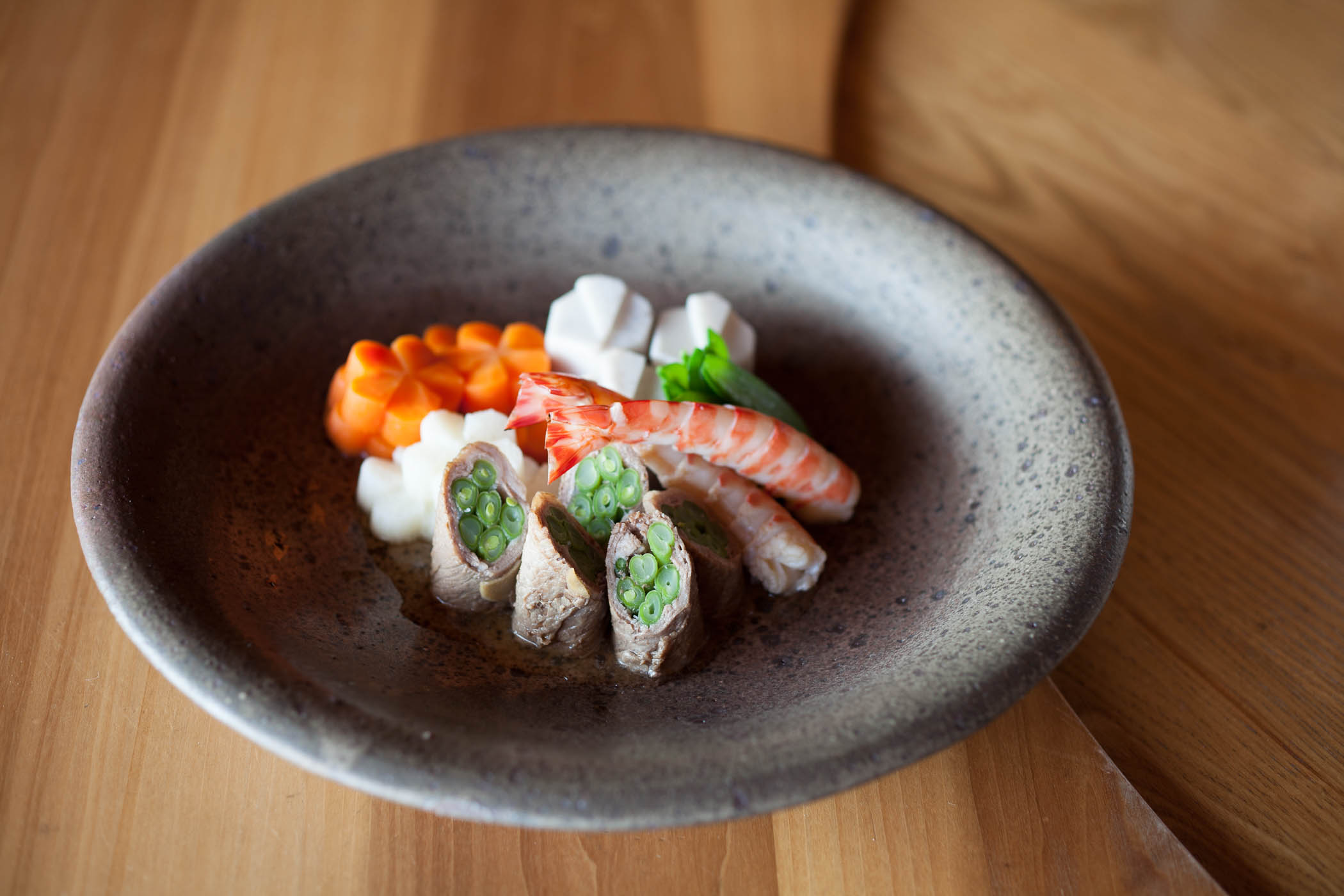Osechi is an epicurean parable passed through generations

As long as we’ve kept track of time, the day on which we reset the calendar has been celebrated as an occasion for reflection, for mental, physical, and spiritual renewal. Hemp fibers twisted into rope figures adorn the entryways to purify and protect the home. Inside decorations made of rice and boughs and bamboo, each with a meaning tied to agricultural rituals that pray for providence and abundance, are set out for display. On the mantle a figurine of a rat takes the place of a boar in a changing of the guard according to the Chinese zodiac. Rounds of mochi, made of clay in our home, topped with a small sudachi citrus from our tree are flanked by salt, sake, and incense – offerings to the gods in a prayer for protection and good fortune in the coming year. We gather around Kuniko’s table for the first meal of the year. I set a tray at each seat and moments before we begin I pull a precious box form the freezer and run cold water over delicate frozen chopsticks fashioned by hand from the freshest bamboo. They are a deep and vibrant emerald green, a symbol of new beginnings. Laying the table with these chopsticks gifted annually by one of the first artisans I interviewed in Japan always inspires a moment of reflection upon the wonderfully unexpected direction my life has taken since moving here.


In the kitchens of ancestral homes, hands fly as fast as they can in the final hours of a waning year. Dictated by tradition and steeped in symbolism, the New Year’s meal known as osechi must be set before the passing year expires in order to greet the first dawn in relaxed contemplation. As much as I’ve explored the food customs of Japan for work and pleasure, I’ll likely never delve into the realm of osechi. Kuniko and my two sisters-in-law are the guardians of this most specific meal. Osechi is an oblation, a gift of foods made in reverence to nature’s many favors, the benevolent winds and rains, the sun and swelter that draw crops forth from the earth to sustain us. These first foods to touch our lips are an edible recitation of prayers for the coming year, each an epicurean parable passed through generations. A Japanese tiger prawn with curved back and far-reaching antennae harkens longevity in the bent frame and long beard of a man wise with years. Tazukuri, the dried sardines once used to fertilize rice fields, denote an abundant harvest and success in the efforts of work. These first allegorical bites pair well with sips of sake, affording comforting ties to a collective heritage. But times and tastes are changing and we are a blended family with links to the customs of different lands as well. And so alongside such ancient edible emblems we warm Mont d’Or atop the wood stove and dine on pork rillettes, olives, and bread that I bake and wash it all down with champagne to assuage our contemporary predilections.
With spirit beholden to the past and a heart hopeful for the future, we eat, we drink, and we meet this good New Year with gratitude, devotion, and celebration.
